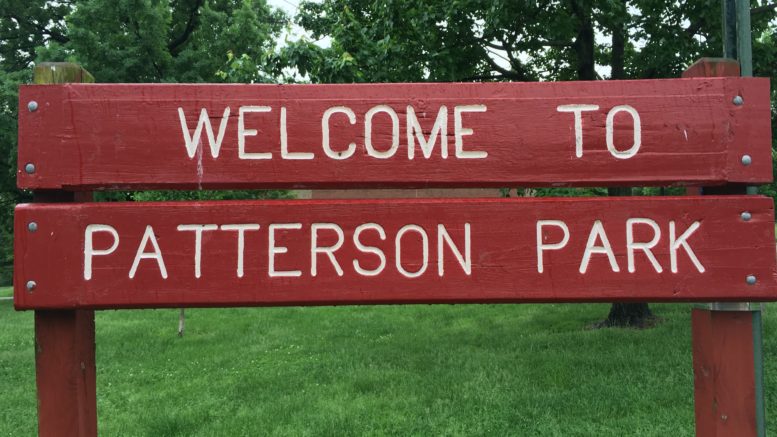The idea to create a special benefits district for Patterson Park appeared shortly after publication of Patterson Park’s 2016 Master Plan. The Master Plan made great recommendations, but had no obvious funding mechanism. This lack of funding sparked research into a variety of different options – some that were better than others. Eventually, a proposal was formalized into a paper which recommends the creation of a special benefits district for Patterson Park. This paper is scheduled for publication in the spring 2019 edition of the Journal for Land and Development, but this website is going to give you a preview.
Below is an executive summary of that paper. We will also be posting a series of blog posts that breaks down some of the data and options for funding Patterson Park’s maintenance and operations. Hope you enjoy!
Executive Summary
Patterson Park’s 2016 Master Plan recommended millions of dollars of improvements to maintenance and operations at Patterson Park. Despite that fact, there is no current funding for these recommended changes. Such funding challenges are demonstrated by comparing Baltimore City’s Recreation and Parks operations budget to those of comparable cities. For instance, operations spending in 2016 by the Recreation and Parks Department was $7,800 per acre of parkland serviced. The average spending of comparable high-density cities was more than three times Baltimore’s spending at $25,427 per acre. Such disparities demonstrate a lack of resources available to both Patterson Park and the park system as a whole. Given these financial challenges, this paper explores different funding options to determine whether they can supply the needed funding to implement the operations and maintenance recommendations made in the Master Plan. The funding sources examined include private philanthropy, permit fees and taxes.
Private philanthropy typically relies on donations from individuals, corporations and charitable foundations. Unfortunately for Patterson Park, it is unrealistic to rely on private philanthropy for long-term operations and maintenance needs.
Current fundraising efforts suggest that individual donors to Patterson Park reside in the neighborhoods surrounding the park and give only a fraction of the amounts needed to fund operations and maintenance changes. These donors are largely homeowners who move in and out of the Patterson Park area on a frequent basis. Once the donor relocates, donations cease. Replacing those donors requires constant and expensive efforts making reliance on individual giving as an inefficient way to raise the amounts needed to fund operations and maintenance changes at Patterson Park.
Corporate philanthropy is also an unreliable source of long-term donations to support operations and maintenance changes at Patterson Park. Nationally, only about one-third of corporations give to charity and make up only about twelve percent of overall giving to park conservancies and foundations. At Patterson Park, corporate giving is even smaller at only about seven percent of overall donations in 2016. As corporate philanthropy is only a small part of overall giving, it remains an unreliable source of long-term operations and maintenance funding at Patterson Park.
Charitable foundations currently make significant donations at Patterson Park. While these donations are substantial, charitable foundations cannot be relied upon to fund Patterson Park maintenance and operations over the long term. Foundations typically give on an annual basis without multi-year commitments. This makes reliance on continuous funding from charitable foundations as impracticable.
Permit fees are likewise an insufficient source of funding and are not available to supply operations and maintenance funds at Patterson Park. In 2016, Recreation and Parks only brought in $563,315 in permit fees over the entire park system. While the permit fees generated at Patterson Park are unknown, it was likely a small part of the city’s overall total. Even then, fees are not returned to individual parks. Instead, these fees are collectively used to fund Recreation and Parks Program and Events Division. As these funds are already allocated, permit fees generated at Patterson Park are currently not available to fund maintenance and operations changes.
Although private philanthropy and permit fees are an impractical way to fund maintenance and operations changes at Patterson Park, implementation of a dedicated tax remains a realistic option. While there are a large amount of tax options, the creation of a special benefits district to fund operations and maintenance at Patterson Park merits strong consideration. First, Baltimore already has experience creating successful special benefit districts for communities and businesses. Extending these districts to parks does not require creating an entirely new tax structure. Second, a special benefits district can be crafted to apply a low tax burden on those who benefit from improvements to Patterson Park by limiting fees to those park users and property owners in the area who benefit from improved park systems. Third, a special benefits district can provide a consistent revenue stream that allows for the long-term operations and maintenance planning recommended in Patterson Park’s Master Plan. Lastly, there is strong evidence that the community will support a small tax to improve Patterson Park’s maintenance and operations structure. With these fundamental elements in place, Patterson Park is a prime candidate for a special benefits district.
The use of a special benefits district to fund park maintenance and operations could stretch well beyond Patterson Park. In fact, there is little reason that the concept of special benefits districts could not help fund parks throughout Baltimore City. All the data cited in this paper indicates that such taxing structures can succeed, can add needed funds to meager parks department budgets and is supported by the public. If the Patterson Park special benefits district proves successful, the city should use such a model throughout Baltimore’s park system.

Be the first to comment on "Executive Summary – Creating a Special Benefits District For Patterson Park"